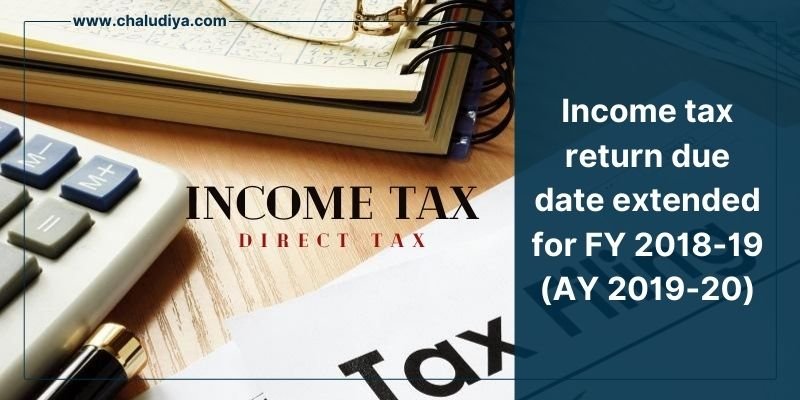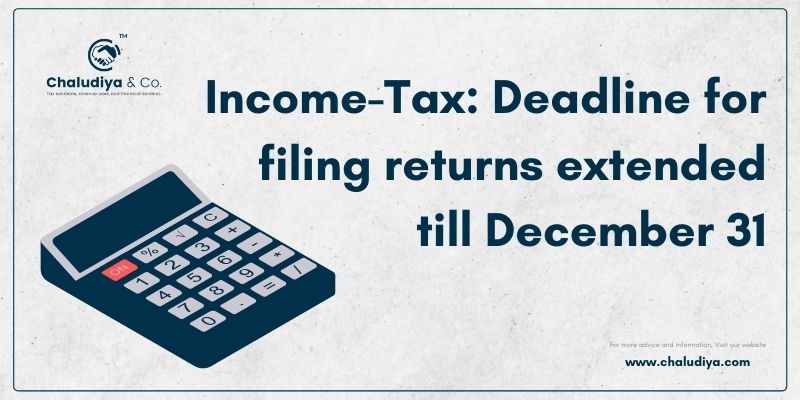- Have any questions?
- +91 76983 15026
- info@chaludiya.com
CBIC notifies GST e-invoicing (turnover above Rs 500 crore)

Income tax return due date extended for FY 2018-19 (AY 2019-20)
July 30, 2020
Holding Udyog Adhar? you need to re-register for-Udyam Registration
July 31, 2020The Central Board of Indirect Taxes and Customs (CBIC) has notified e-invoicing for businesses with turnover above Rs 500 crore, increasing the threshold for mandatory issuing of electronic invoices from the earlier limit of Rs 100 crore turnover, providing relief to small scale companies.
Further, units in Special Economic Zones (SEZs) are not required to follow e-invoicing rules, the government has said in the notification dated July 29. E-invoicing for business to business transactions will be implemented from October 1, 2020.
“We will not do it for (businesses with) Rs 100 crore sales but will start with Rs 500 crore and as it stabilises, we will do it for (businesses with) Rs 100 crore sales and more,” Yogendra Garg, principal commissioner, GST policy at the CBIC had said in a webinar last week. The notification issued also includes formats or schemas for execution of e-invoicing by trade.
The government intends to implement e-invoicing or electronic submission of sales invoice to bring more transparency in sales reporting, automate data entry work, reduce errors and mismatches, capture sales related details in the system instantaneously and improve compliance. The practice followed in many international markets will also prevent tax evasion while reducing chances of audits or surveys.
Insurance and banking companies, financial institutions, non-banking financial institutions, goods transportation agencies and passenger transportation services will be exempted from e-invoicing and dynamic QR codes.
CBIC had also mandated implementation of dynamic quick response (QR) codes on e-invoices from October 1, however, this has not been made mandatory in the July 29 notification. A QR Code contains details of an invoice such as GST identification numbers of suppliers, receiver and invoice numbers, which can be checked instantaneously without internet access.
How is the GST E-invoicing System Beneficial?
- Reporting and authentication of B2B invoices from the common portal will ensure that GST ANX-1 and ANX-2 are auto-prepared in the new format. IT also auto prepares GSTR 1 for B2B supplies.
- E-invoicing can be further used for creating e-way bills by providing only vehicle details.
- Invoices uploaded by suppliers for authentication will be automatically shared with buyers for reconciliation.
- The system will auto-match input credit liability with output tax. E-invoice can be created for Debit/Credit Notes, Invoices, and other eligible documents.
- E-invoice can be created for Debit/Credit Notes, Invoices, and other eligible documents.
Let’s Check GST E-invoice Generating Procedure
The taxpayer or business is responsible to generate the invoice/s and then submit them to Invoice Registration Portal (IRP) for approval. After successful verification, the portal will return the invoice to the supplier along with a unique reference number, digital signature, and a QR code. The e-invoice will also be shared with the corresponding buyer on the email id provided.
Step 1: Invoice Creation
The seller/supplier will create an invoice in the prescribed format (e-invoice schema) using his/her accounting or billing software. It must have the mandatory details.
The accounting software of the supplier will generate a JSON for each B2B invoice. The JSON file will be uploaded to the IRP.
Step 2: IRN Generation
The next step would be to generate a unique Invoice Reference Number (IRN) by the seller using a standard hash-generation algorithm.
Step 3: Invoice Uploading
Now, the seller will upload JSON for each of the invoices, along with IRN, to the Invoice Registration Portal, either directly or through third-party software.
Step 4: Authentication and Signing
IRP will validate the hash/IRN attached with JSON or generate an IRN if not already uploaded by the supplier.
Then, it will authenticate the file against the central registry of GST.
Upon successful verification, it will add its signature on the invoice and a QR code to JSON.
Hash generated earlier will become the new IRN of the E-invoice. It will be the unique identity of that e-invoice for the entire financial year.
Step 5: Sharing of Data
The uploaded data will be shared with the E-way bill and GST system.
Step 6: E-invoice Downloading
The portal will send the digitally-signed JSON along with IRN and QR code back to the seller. The invoice will also be sent to the buyer on their registered email id.




